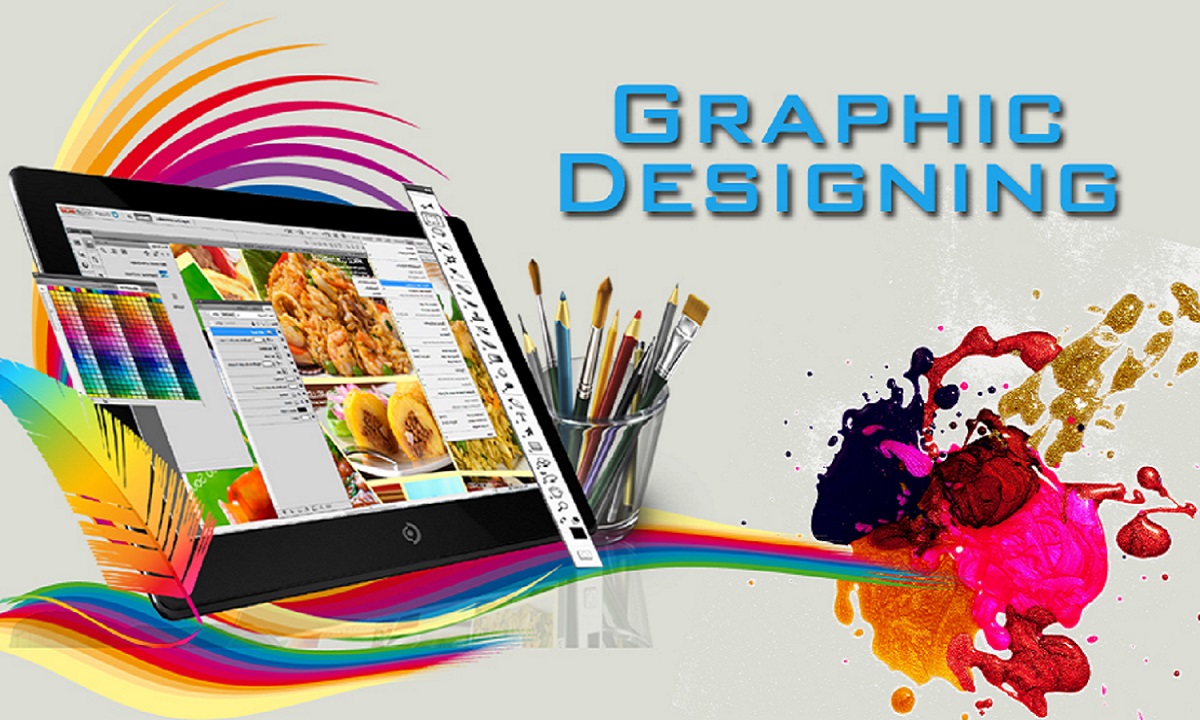In today’s digital landscape, graphic design serves as the cornerstone of visual communication. Whether it’s crafting captivating social media posts, designing stunning logos, or producing eye-catching websites, the realm of graphic design is vast and ever-evolving. This article delves deep into the world of graphic design, offering insights, tips, and techniques to empower both beginners and seasoned professionals.
Graphic Design: An Artistic Journey

Embark on a journey through the realms of creativity and imagination as we unravel the essence of graphic design. From its historical roots to its modern-day applications, discover how graphic design has shaped the visual landscape of the digital era.
Exploring the Fundamentals
Understanding Color Theory: Painting with Precision Delve into the psychology of color and learn how different hues evoke emotions and convey messages. Explore the principles of color harmony and discover how to create visually striking compositions that resonate with your audience.
Typography: The Art of Letterforms Unlock the power of typography as we delve into the intricate world of fonts, typefaces, and letterforms. Learn how to choose the perfect typography to enhance readability, convey tone, and elevate your design aesthetics.
Composition Techniques: Crafting Visual Masterpieces Master the art of composition and discover how to arrange visual elements to create balanced and harmonious designs. Explore principles such as symmetry, balance, and hierarchy, and learn how to guide the viewer’s eye through your creations.
The Role of Images and Illustrations: Bringing Designs to Life Harness the potential of images and illustrations to add depth, meaning, and personality to your designs. From sourcing high-quality stock photos to creating custom illustrations, uncover the myriad ways to integrate visuals seamlessly into your projects.
Tools of the Trade
Graphic Design Software: Navigating the Digital Canvas Explore a plethora of graphic design software options, from industry-standard tools like Adobe Photoshop and Illustrator to beginner-friendly alternatives like Canva and Figma. Discover their features, functionalities, and suitability for various design tasks.
Digital Drawing Tablets: Bridging the Gap Between Analog and Digital Experience The tactile precision of digital drawing tablets as we delve into their role in modern graphic design workflows. Whether you’re a digital artist, illustrator, or designer, uncover how these versatile devices can elevate your creative process.
Collaboration Platforms: Fostering Creative Synergy Embrace the power of collaboration with online platforms designed to streamline communication and workflow management. From project management tools like Asana and Trello to cloud-based storage solutions like Google Drive and Dropbox, learn how to foster teamwork and synergy in your design projects.
Emerging Trends and Innovations

Responsive Design: Adapting to a Multiscreen World Navigate the dynamic landscape of responsive design and learn how to create websites and interfaces that seamlessly adapt to various screen sizes and devices. Explore techniques such as fluid grids, flexible images, and media queries to deliver optimal user experiences across the digital spectrum.
Augmented Reality: Blurring the Lines Between Virtual and Reality Embark on a journey into the realm of augmented reality (AR) and discover how this groundbreaking technology is revolutionizing the way we interact with digital content. Explore its applications in gaming, marketing, and beyond, and learn how to incorporate AR elements into your graphic design projects.
Minimalism: Less is More Embrace the philosophy of minimalism and discover how simplicity can elevate your design aesthetic. Explore minimalist principles such as whitespace, simplicity, and clarity, and learn how to create impactful designs that resonate with your audience.
FAQs (Frequently Asked Questions)
What is the role of graphic design in branding?
Graphic design plays a pivotal role in branding by visually representing a brand’s identity, values, and personality. From logos and color palettes to typography and visual elements, every aspect of design contributes to shaping a brand’s perception.
How can graphic design benefit small businesses?
Graphic design can help small businesses establish a strong visual presence, differentiate themselves from competitors, and communicate effectively with their target audience. Whether it’s through logo design, branding materials, or marketing collateral, compelling graphics can leave a lasting impression on potential customers.
What are some essential graphic design principles?
Some essential graphic design principles include balance, contrast, alignment, proximity, and repetition. These principles help create visually appealing and cohesive designs that effectively communicate the intended message to the audience.
How has technology impacted graphic design?
Technology has revolutionized the field of graphic design, providing designers with powerful tools and resources to unleash their creativity. From digital drawing tablets and graphic design software to online collaboration platforms and emerging technologies like augmented reality, designers now have unprecedented opportunities to innovate and experiment.
What are some common mistakes to avoid in graphic design?
Some common mistakes to avoid in graphic design include poor font choices, cluttered layouts, inconsistent branding, low-quality images, and lack of whitespace. By paying attention to these pitfalls and adhering to design best practices, designers can create more effective and visually appealing designs.
How can one pursue a career in graphic design?
To pursue a career in graphic design, individuals can start by acquiring foundational skills through formal education, online courses, or self-study. Building a strong portfolio showcasing diverse projects and honing both technical skills and creativity are essential steps towards entering the field.
Conclusion:
In conclusion, graphic design serves as a powerful medium for conveying ideas, emotions, and messages in the digital realm. By mastering the fundamentals, embracing emerging technologies, and staying abreast of industry trends, designers can unleash their creativity and make a meaningful impact through their work.

Eric Clark is a passionate writer and avid explorer of the written word. With a background in literature and a keen interest in technology, Eric brings a unique perspective to his writings. He enjoys delving into a variety of topics, from the latest advancements in artificial intelligence to timeless classics of literature. When he’s not lost in the world of words, you can find Eric hiking in the great outdoors or experimenting with new recipes in the kitchen. Follow along as he shares his insights, experiences, and discoveries on the blogosphere.

